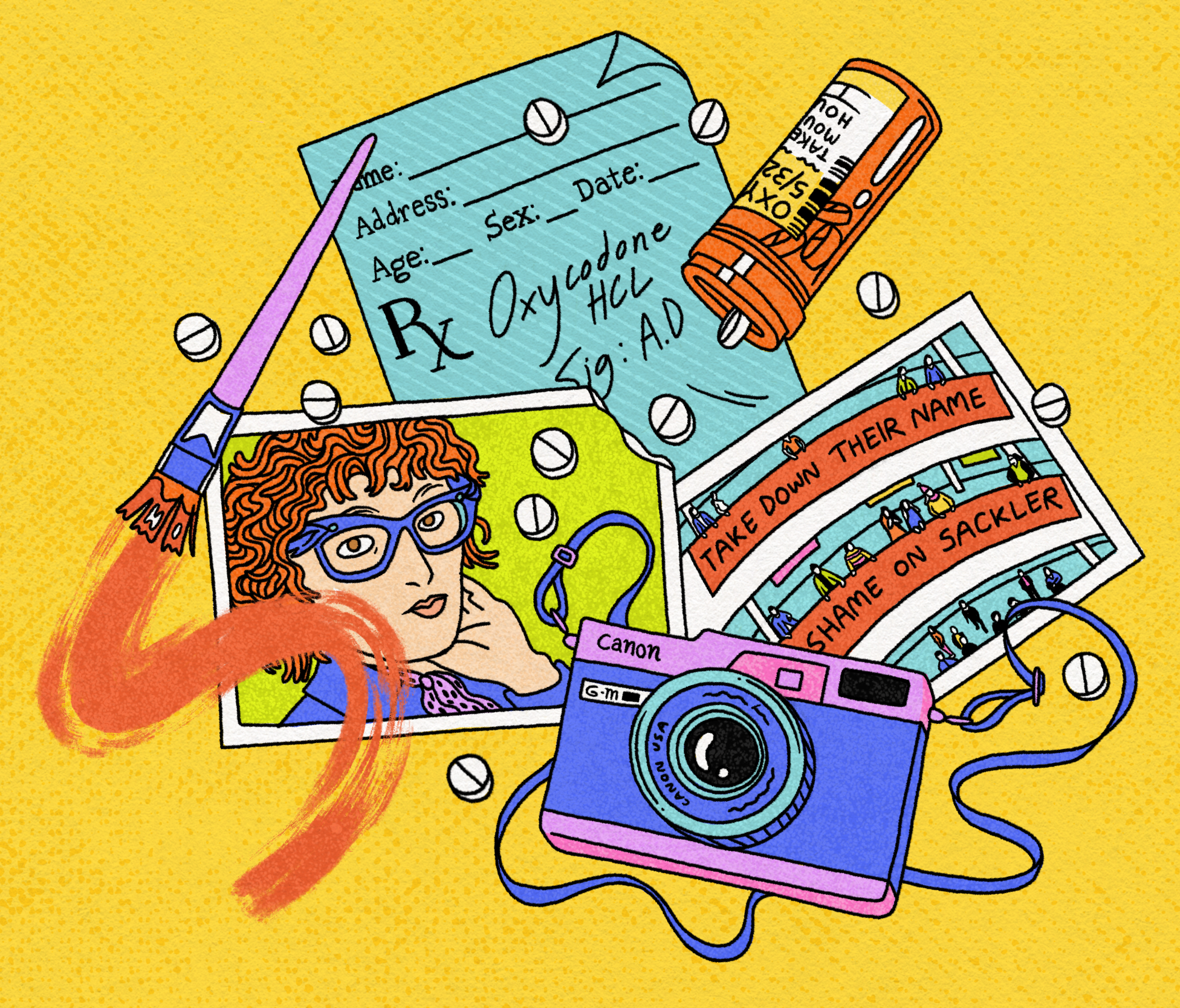'All the Beauty and the Bloodshed' and the Art of Survival
In Laura Poitras’ latest film, All the Beauty and the Bloodshed, art and activism become inextricably intertwined as she documents the life and work of Nan Goldin. The documentary follows the photographer’s involvement in the advocacy group, P.A.I.N. (Prescription Addiction Intervention Now), and their goal to strip the Sackler pharmaceutical family name from museums and other art institutions. Framed against slideshows of Goldin’s work and traumatic recollections from her life, often influenced by her own experience with opiates, Poitras’ documentary is a thoughtful meditation on the painful intersections of addiction, queerness, and making sense of it all through art.
Much like the “blizzard” of paper prescriptions that P.A.I.N. activists released in a demonstration at the Guggenheim—each portrait of protest is chilling and demands immediate attention. The anxiety, fear and anticipation of failure behind every act of political demonstration is deliberately placed at the forefront of this story, just as the pictures of Nan’s families are presented to us with both grief and care.
“To most people, [Nan’s subjects] seem like characters, whereas to the people being photographed, they seem like themselves. She photographs from our side.” – Darryl Pinckney, American novelist, playwright and activist.
During the presentations of Nan’s slideshows, Poitras’ interviewees offer appreciative reflections on Nan’s photography from artists and activists alike, while Nan herself reveals the insight behind them. She tells sweet and somber anecdotes about her chosen family, composed of other influential creatives like David Armstrong and Cookie Mueller. At first, the pictures of bohemian New York in the seventies feel incredibly romantic, set to the soulful songs of artists like Lou Reed and Jay Hawkins—but they are reeled back into reality when the weight of the AIDS crisis and opioid epidemic coats the photos of people who have passed in a gritty film.
“Survival was an art,” Nan says as she recalls the way her drag queen friends could only go out in the dark. And as we hear multiple P.A.I.N. activists in the film recount instances of being ominously stalked in the city to this day, we see that survival continues to be its own complex art form.
Complete with a brief training on how to administer Narcan, a life-saving nasal spray to reverse an overdose, All the Beauty and the Bloodshed leaves its audience with a purposeful focus on a future for harm reduction—and an introspective interrogation of stigma.
Critical of the normative system of beliefs that led to her sister’s death, Nan cites her parents as people who “had children because they were expected to, more than it was about nurturing human beings.” The documentary is bookended with the story of Nan’s sister Barbara, who committed suicide at the age of eighteen after being institutionalized for homosexuality. Her haunting presence in the film, as we witness the aftereffects of different tragedies, leaves you with the desire to prioritize the care of human beings. Though the suicide of Barbara Goldin took place in 1965, the stigmas around addiction and sexuality are still very much alive, and as the film posits: “The wrong things are [still] kept secret.” But in each vulnerable story shared, in each act of public demonstration, in each of Goldin’s photographs, this film was made to defy that secrecy. ♦

